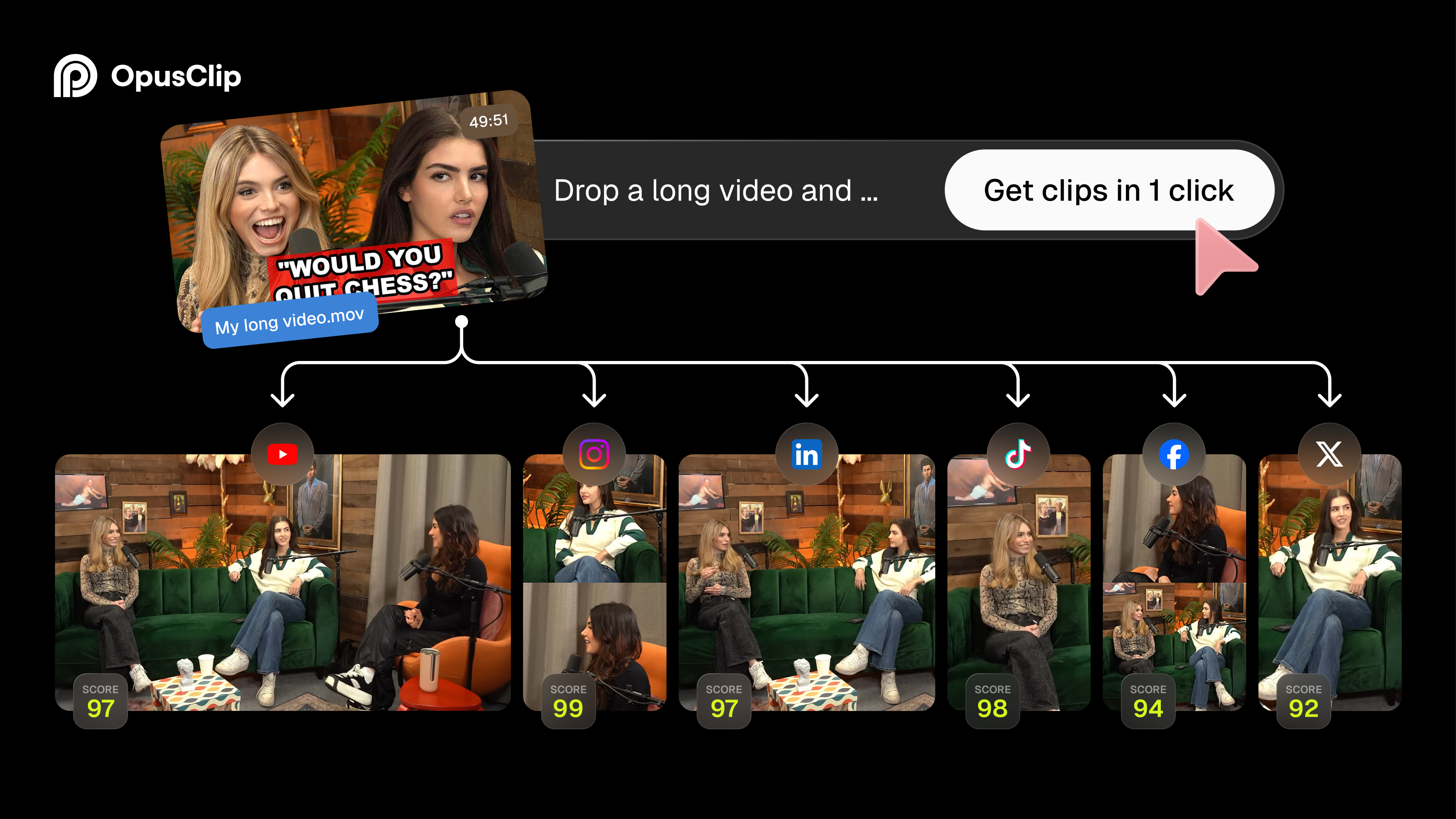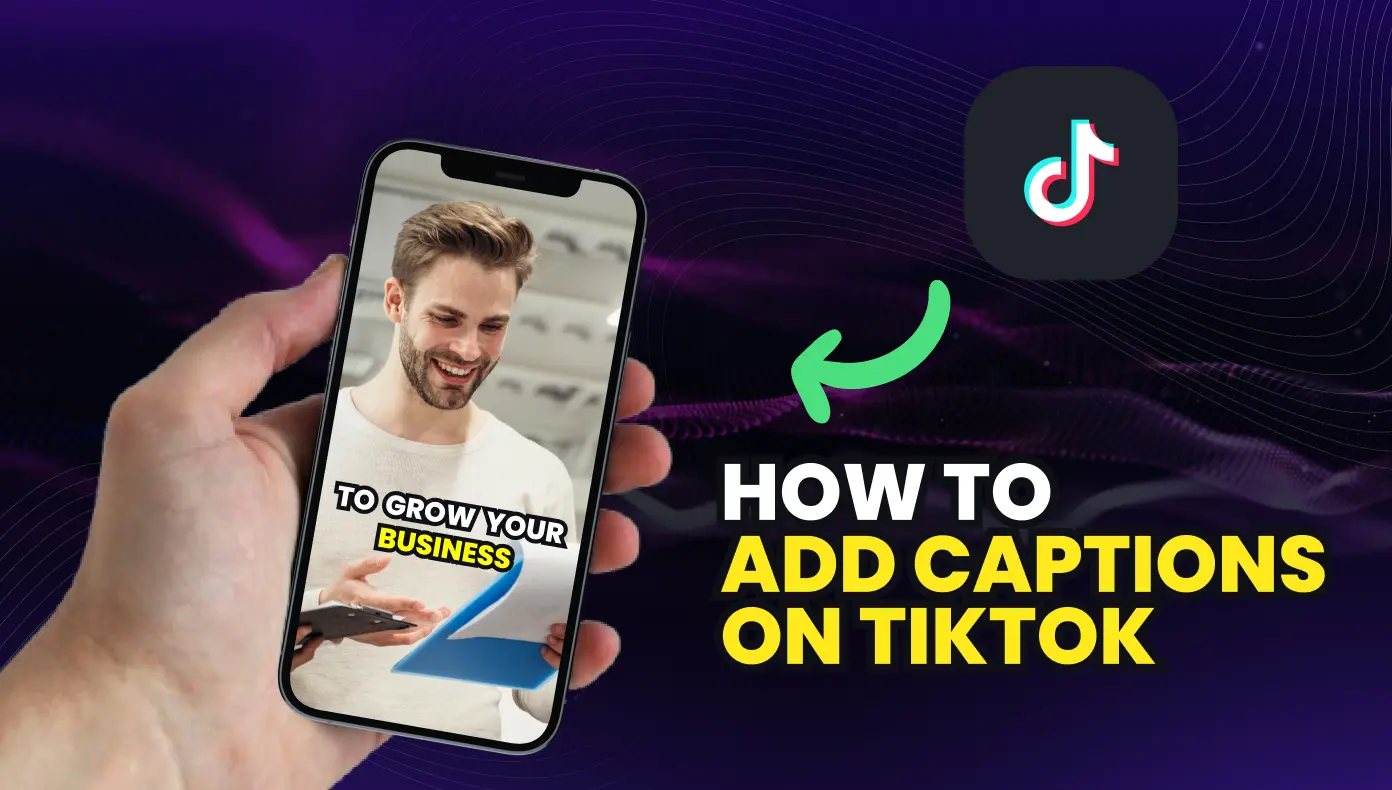Caption vs Subtitle: What's the Difference and Which Should You Use?
%2520(1).png)
Captions and subtitles are both text overlays that accompany video content, but they serve distinctly different purposes. Captions transcribe all audio elements including dialogue, sound effects, and music for accessibility purposes, primarily helping deaf and hard-of-hearing viewers. Subtitles, on the other hand, translate spoken dialogue into different languages or provide text for viewers who can hear the audio but prefer reading along. Understanding this difference is crucial for creators, marketers, and agencies who want to maximize their video reach and ensure compliance with accessibility standards.
%2520(1).png)
What Are Captions?
Captions are comprehensive text representations of all audio content in a video, designed primarily for accessibility. They include not only spoken dialogue but also sound effects, music descriptions, speaker identification, and other audio cues that contribute to the viewing experience.
Key Features of Captions:
- Complete audio transcription: Include dialogue, sound effects, music, and ambient sounds
- Speaker identification: Show who is speaking when multiple people are present
- Non-speech audio cues: Describe important sounds like [door slams], [phone rings], or [upbeat music]
- Accessibility compliance: Meet ADA and WCAG standards for deaf and hard-of-hearing viewers
- Same language as audio: Typically match the spoken language of the video
Types of Captions:
Open Captions (Burned-in)
- Permanently embedded in the video file
- Cannot be turned off by viewers
- Ensure universal accessibility across all platforms
- Ideal for social media content where caption controls may not be available
Closed Captions (CC)
- Can be toggled on/off by viewers
- Stored as separate subtitle files (SRT, VTT, etc.)
- Provide flexibility for different viewing preferences
- Required for broadcast television and many streaming platforms
What Are Subtitles?
Subtitles are text overlays that primarily translate spoken dialogue from one language to another or provide text for viewers who can hear the audio. Unlike captions, subtitles assume the viewer can hear non-dialogue audio elements.
Key Features of Subtitles:
- Dialogue-focused: Primarily translate or transcribe spoken words
- Language translation: Convert content from one language to another
- Minimal non-speech elements: Rarely include sound effects or music descriptions
- Cultural adaptation: May adapt cultural references for target audiences
- Timing synchronization: Precisely matched to spoken dialogue
Types of Subtitles:
Intralingual Subtitles
- Same language as the audio
- Help viewers follow along with dialogue
- Useful for noisy environments or learning purposes
Interlingual Subtitles
- Different language from the audio
- Translate content for international audiences
- Essential for global content distribution

Why Do Captions and Subtitles Matter for Video Production?
Understanding the importance of captions and subtitles can significantly impact your video's reach, engagement, and compliance with accessibility standards.
Accessibility Benefits:
- Legal compliance: Meet ADA requirements and avoid potential lawsuits
- Inclusive content: Ensure deaf and hard-of-hearing viewers can access your content
- Better user experience: Provide options for different viewing preferences and situations
Engagement and Reach Benefits:
- 85% of social media videos are watched without sound: Captions ensure your message gets across
- Higher engagement rates: Videos with captions see up to 40% higher engagement
- Global audience expansion: Subtitles open your content to international markets
- SEO improvements: Text content helps search engines understand and index your videos
Business Impact:
- Increased watch time: Viewers are more likely to watch videos to completion with captions
- Better conversion rates: Clear messaging through text overlays can improve call-to-action effectiveness
- Platform compliance: Meet requirements for various social media platforms and streaming services
When Should You Use Captions vs Subtitles?
Choosing between captions and subtitles depends on your audience, platform, and content goals.
Use Captions When:
- Accessibility is a priority: Creating content for diverse audiences including deaf and hard-of-hearing viewers
- Social media distribution: Posting on platforms where videos autoplay without sound
- Educational content: Helping viewers follow along with complex information
- Legal compliance required: Meeting ADA or other accessibility standards
- Sound design is important: When sound effects and music are crucial to understanding
Use Subtitles When:
- International distribution: Expanding to global markets with different languages
- Dialogue-heavy content: Focus is primarily on spoken conversation
- Budget constraints: Translation-only approach is more cost-effective
- Platform limitations: Working with systems that don't support full captioning
- Target audience can hear: Viewers primarily need translation, not accessibility features
Use Both When:
- Maximum accessibility: Serving both deaf/hard-of-hearing viewers and international audiences
- Professional content: Creating comprehensive, inclusive video experiences
- Multiple platform distribution: Ensuring compatibility across various channels
- Brand commitment: Demonstrating dedication to accessibility and global reach
Captions vs Subtitles: Side-by-Side Comparison
Pros and Cons Analysis
Captions
Pros:
- Complete accessibility compliance
- Enhanced user experience for all viewers
- Improved engagement on sound-off viewing
- Better SEO potential with comprehensive text
- Future-proofed for accessibility requirements
Cons:
- Higher production costs and time investment
- More complex file management
- Potential screen clutter with extensive descriptions
- Requires skilled captioning professionals
Subtitles
Pros:
- Cost-effective for basic translation needs
- Faster production timeline
- Cleaner visual appearance
- Easier to manage for simple content
- Wide international reach potential
Cons:
- Limited accessibility features
- May not meet legal compliance requirements
- Excludes deaf and hard-of-hearing audiences
- Missing context from non-dialogue audio

How to Add Professional Captions and Subtitles to Your Videos
Creating high-quality captions and subtitles requires the right tools and techniques. OpusClip's AI-powered captioning system streamlines this process, offering both automated and professional-grade solutions.
Automated AI Solutions:
OpusClip Caption Features:
- 99% accuracy rates: Advanced AI speech recognition technology
- Multiple language support: Over 20 languages including Spanish, French, German, and more
- Instant generation: Auto caption generator creates captions in seconds
- Customizable styling: Animated captions with brand-consistent formatting
- Platform optimization: Formatted for YouTube, TikTok, Instagram, and LinkedIn
Professional Production Workflow:
- Upload your video to OpusClip's platform
- Select caption type: Choose between accessibility captions or basic subtitles
- Choose language options: Original language or translation targets
- Review and edit: Use built-in editing tools to refine accuracy
- Apply styling: Customize fonts, colors, and animations
- Export in multiple formats: SRT, VTT, or burned-in options
Platform-Specific Solutions:
- YouTube captions: Optimized for YouTube's caption system
- Instagram video captions: Perfect for Reels and feed posts
- TikTok caption generator: Designed for TikTok's fast-paced format
- LinkedIn video captions: Professional formatting for business content
Best Practices for Caption and Subtitle Implementation
Technical Best Practices:
Timing and Synchronization:
- Keep caption segments between 1-6 seconds for optimal readability
- Maintain 160-180 words per minute reading speed
- Ensure precise synchronization with audio cues
- Use appropriate line breaks at natural speech pauses
Formatting Standards:
- Maximum 2 lines per caption segment
- 32-42 characters per line for optimal readability
- Use proper punctuation and capitalization
- Maintain consistent font sizing and positioning
Quality Assurance:
- Review all captions for accuracy and timing
- Test playback across different devices and platforms
- Verify compliance with accessibility standards
- Check for cultural sensitivity in translations
Content Best Practices:
For Captions:
- Include all relevant sound information
- Use brackets for non-speech sounds: [applause], [music fades]
- Identify speakers clearly: "JOHN:" or "NARRATOR:"
- Describe important visual context when audio references it
For Subtitles:
- Focus on clear, concise dialogue translation
- Adapt cultural references for target audiences
- Maintain the original tone and intent
- Use localized punctuation and formatting conventions
Accessibility Compliance:
ADA Requirements:
- Provide accurate, complete, and synchronized captions
- Ensure captions are clearly visible and readable
- Include all meaningful audio content
- Test with assistive technologies
WCAG Guidelines:
- Meet Level AA compliance standards
- Provide user control over caption display
- Ensure sufficient color contrast
- Support keyboard navigation for caption controls
Platform Optimization:
Different platforms have specific requirements and best practices:
Social Media Platforms:
- Use eye-catching, branded caption styles
- Optimize for mobile viewing
- Consider autoplay without sound scenarios
- Include relevant hashtags and calls-to-action
Streaming and Educational Platforms:
- Prioritize accuracy over speed
- Include comprehensive audio descriptions
- Provide multiple language options
- Ensure compatibility with learning management systems
Conclusion
The choice between captions and subtitles ultimately depends on your content goals, target audience, and accessibility requirements. Captions provide comprehensive accessibility and engagement benefits, making them ideal for inclusive content creation and social media distribution. Subtitles offer efficient translation solutions for global reach and cost-effective dialogue support.
For maximum impact, consider implementing both captions and subtitles in your video production workflow. OpusClip's comprehensive captioning tools make it easy to create professional-quality text overlays that enhance accessibility, engagement, and global reach.
Whether you're creating viral short-form content, educational materials, or marketing videos, investing in proper caption and subtitle implementation will significantly improve your content's effectiveness and accessibility.
Ready to enhance your videos with professional captions and subtitles? Start with OpusClip's free captioning tool and experience the difference quality text overlays can make for your content strategy.
Looking to streamline your video production workflow? Explore OpusClip's full suite of AI-powered video editing tools designed for creators, marketers, and agencies who demand professional results without the complexity.


























